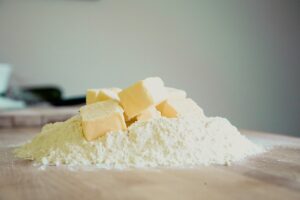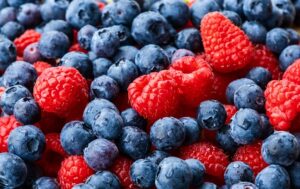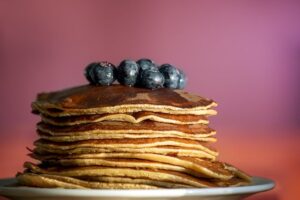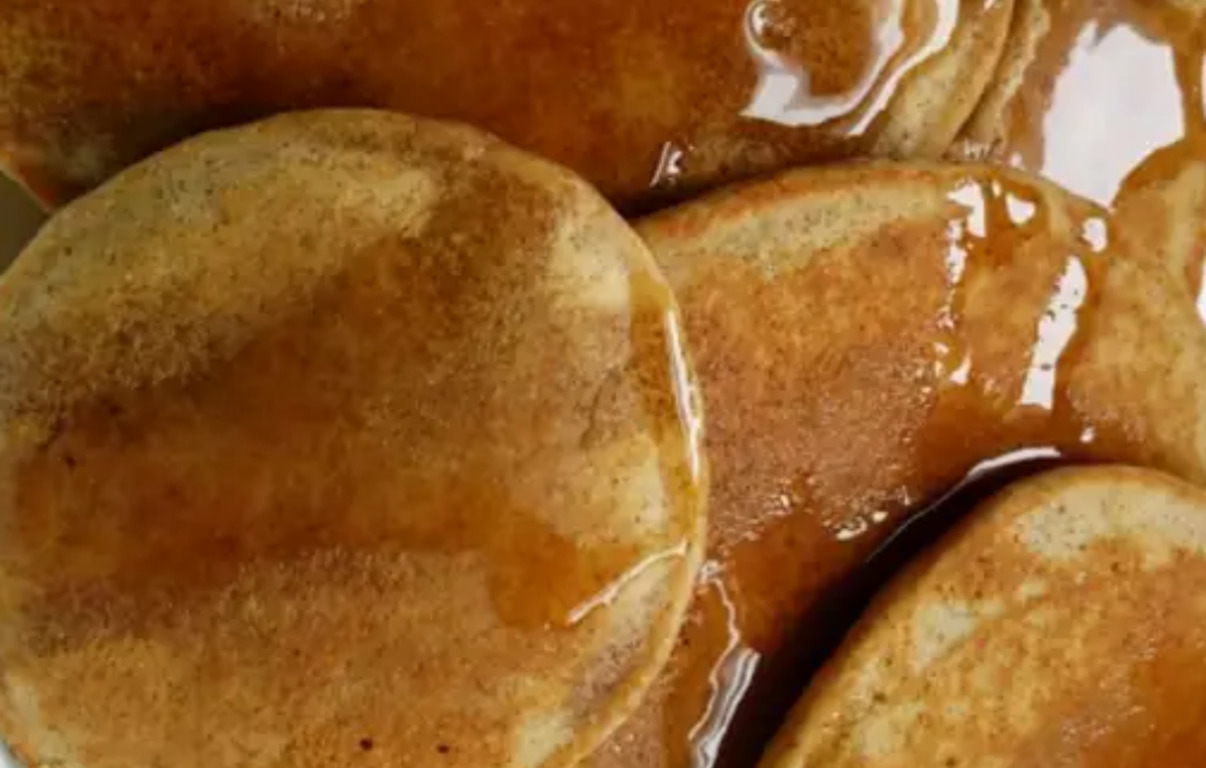What Goes Into Buttermilk Pancake Mix?
Buttermilk pancakes are a beloved breakfast enjoyed worldwide. Their light, fluffy texture and subtle tangy flavor distinguish them from regular pancakes. But what exactly makes buttermilk pancake mix different? What ingredients create this delicious meal, and how can you make your own at home for the freshest pancakes possible? In this guide, we will explore everything you need to know about buttermilk pancake mix, from essential ingredients to customization tips, variations, storage, reheating, and serving.
Essential Ingredients in Buttermilk Pancake Mix
A classic buttermilk pancake mix is made up of a few core ingredients that work together to create the signature flavor and texture. These ingredients are carefully balanced to produce light, fluffy, and flavorful pancakes with a tender crumb and golden-brown exterior.
Flour, Leavening Agents, and Sugar

The main ingredient in any pancake mix is flour. Most recipes use all-purpose flour because it provides the ideal balance of protein and starch, creating structure while keeping the pancakes tender. Some variations may include small amounts of whole wheat flour for added fiber and a heartier texture, but all-purpose flour remains the base for most traditional buttermilk pancake mixes.
Leavening agents, like baking powder and baking soda, are essential for achieving the airy texture buttermilk pancakes are known for. Baking powder creates carbon dioxide bubbles when it reacts with heat, causing the pancakes to rise as they cook. Baking soda reacts with the acidity of the buttermilk to add extra lift. Together, these ensure the pancakes puff up beautifully on the griddle.
Sugar is used sparingly but plays a crucial role in balancing the tanginess of the buttermilk and adding a touch of sweetness. It also aids in caramelization, helping the pancakes achieve a golden-brown color.
Buttermilk Powder and Salt
Buttermilk is a defining feature of these pancakes. In traditional recipes, liquid buttermilk provides moisture, flavor, and acidity. However, many store-bought mixes use buttermilk powder, which has a longer shelf life and allows for more convenience by simply rehydrating with water.
Buttermilk adds a distinct tangy flavor but also reacts with baking soda to create the fluffy texture. It also tenderizes the flour, resulting in a softer crumb.
Salt, although used in small quantities, enhances the flavors in the mix, giving the pancakes a richer, more well-rounded taste. Without salt, the pancakes would taste flat.
Butter or Oil
Fats such as butter or oil play a vital role in the texture and flavor of pancakes. Melted butter adds richness and complements the tangy buttermilk. It also helps create a tender pancake by coating the flour particles, preventing tough gluten formation.
Vegetable oil can be substituted for butter, particularly in dairy-free or vegan recipes. While it doesn’t offer the same flavor, it provides the necessary fat to keep the pancakes moist. Oil also has a higher smoke point than butter, which can be beneficial when cooking pancakes on a hot griddle.
How to Make the Perfect Pancakes
Now that you’re familiar with the ingredients that make up a buttermilk pancake mix, it’s time to learn how to turn those ingredients into perfect pancakes. Pancake-making is both an art and a science, requiring attention to detail and a few helpful techniques.
Preheat the Griddle and Avoid Overmixing
One of the most important steps in making pancakes is preheating the griddle or pan properly. If the pan is too cold, the pancakes won’t cook evenly and may come out dense. On the other hand, if the pan is too hot, the pancakes will brown too quickly on the outside while remaining raw on the inside. The ideal temperature for cooking pancakes is around 375°F. You can test the temperature by sprinkling a few drops of water on the surface; if the water sizzles and evaporates quickly, the pan is ready.
When it comes to mixing the batter, less is more. Overmixing the batter is one of the most common mistakes people make when making pancakes. As tempting as it may be to stir until the batter is perfectly smooth, doing so will activate too much gluten in the flour, resulting in tough, chewy pancakes. Instead, mix the wet and dry ingredients together just until they are combined. It’s okay if the batter is a little lumpy – the lumps will disappear as the pancakes cook.
Grease the Pan Lightly and Watch for Bubbles
Once your pan is preheated, it’s important to grease it properly. A small amount of butter or oil should be enough to prevent the pancakes from sticking. Too much fat can cause the pancakes to become greasy and may even burn on the surface, so use it sparingly.
After you pour the batter onto the griddle, watch for bubbles to form on the surface of the pancake. These bubbles are a good indicator that the pancake is cooking evenly and is ready to be flipped. Once the bubbles start to pop and the edges look set, it’s time to flip the pancake. Be gentle when flipping to avoid deflating the pancake.
Keep Pancakes Warm Until Serving
If you’re making a large batch of pancakes, it’s important to keep the finished pancakes warm until you’re ready to serve them. The best way to do this is by placing the pancakes on a baking sheet in a low oven (around 200°F). This will keep them warm without drying them out or overcooking them.
Customizing Your Pancake Mix
While classic buttermilk pancakes are always a hit, there are countless ways to customize your pancake mix to suit your personal taste preferences. Here are a few ideas for taking your pancakes to the next level.
Adding Fruits, Nuts, and Spices

One of the easiest ways to add flavor and texture to your pancakes is by incorporating fresh fruits, nuts, or spices into the batter. Blueberries, raspberries, bananas, and apples are all popular choices for fruit-filled pancakes. Simply fold the fruit into the batter before cooking, or sprinkle it on top of the pancakes as they cook.
For a bit of crunch, try adding chopped nuts like walnuts, pecans, or almonds to your pancake batter. The nuts will toast slightly as the pancakes cook, adding a delicious nutty flavor and texture.
Spices like cinnamon, nutmeg, and vanilla extract can also be added to the batter to give your pancakes a warm, cozy flavor. These spices work particularly well in fall-inspired pancakes, such as apple-cinnamon or pumpkin pancakes.
Whole Grains and Vegan Options
If you’re looking to make your pancakes a bit healthier, consider swapping out some of the all-purpose flour for whole grains. Whole wheat flour, oat flour, and almond flour are all great options for adding fiber and nutrients to your pancakes. Keep in mind that whole grains tend to absorb more liquid than regular flour, so you may need to adjust the amount of buttermilk or water in your recipe accordingly.
For those who follow a vegan diet, you can still enjoy delicious buttermilk pancakes by making a few simple substitutions. Replace the buttermilk with a dairy-free alternative, such as almond milk or soy milk, and add a tablespoon of lemon juice or apple cider vinegar to mimic the tanginess of buttermilk. Instead of eggs, use a flaxseed or chia seed “egg” by mixing one tablespoon of flaxseed meal or chia seeds with three tablespoons of water and letting it sit for a few minutes until it thickens.
Tips for Storing and Reheating Pancakes
If you find yourself with leftover pancakes or want to prepare a large batch in advance, proper storage and reheating techniques can help you enjoy them later without sacrificing quality.
Freezing and Reheating Pancakes
To freeze pancakes, allow them to cool completely after cooking. Then, place them in a single layer on a baking sheet and freeze until solid. Once frozen, transfer the pancakes to an airtight container or freezer bag. Frozen pancakes can be stored for up to two months and are perfect for quick breakfasts on busy mornings.
When you’re ready to eat your frozen pancakes, you can reheat them in the toaster or microwave. Toasting will give the pancakes a crisp exterior, while microwaving will keep them soft and fluffy. Alternatively, you can reheat a large batch of pancakes in the oven by placing them in a single layer on a baking sheet and warming them in a 350°F oven for about 10 minutes.
Storing Pancake Mix
If you’ve made extra pancake mix, you can store it in the refrigerator for up to three days. Be sure to transfer the mix to an airtight container to prevent it from absorbing any odors from the fridge. Before using the mix, give it a good stir, as some of the ingredients may have settled or separated.
Serving Suggestions for Buttermilk Pancakes
Buttermilk pancakes are incredibly versatile and can be served with a wide variety of toppings and accompaniments. Here are some classic and creative serving ideas to inspire your next breakfast.
Classic Syrup & Butter
The most traditional way to serve buttermilk pancakes is with a generous pat of butter and a drizzle of maple syrup. The sweet syrup complements the tangy pancakes perfectly, creating a harmonious blend of flavors. This simple combination lets the flavor of the pancakes shine through while adding just the right amount of richness.
Fresh Fruits and Berries
For a healthier and more colorful option, try serving your pancakes with fresh fruit. Berries such as blueberries, raspberries, strawberries, or blackberries provide a burst of flavor and vibrant color to your plate. You can also slice bananas or apples as toppings. The natural sweetness and juiciness of the fruits contrast beautifully with the rich and slightly tangy pancakes, adding a fresh element to the meal.
Yogurt & Honey
If you’re looking for a lighter and protein-packed topping option, try pairing your pancakes with Greek yogurt and a drizzle of honey. The tangy yogurt adds creaminess and pairs well with the sweet honey. This combination is both satisfying and nutritious, offering a boost of protein and probiotics to start your day on a healthy note.
Nut Butter & Bananas
For those who love a bit of decadence, consider spreading your pancakes with peanut butter, almond butter, or any nut butter of your choice. The creamy texture of the nut butter adds richness, while the bananas add sweetness. This combination also offers a good amount of protein and healthy fats, making it a great option for a more filling breakfast.

Whipped Cream & Chocolate Chips
If you’re in the mood for something a bit more indulgent, top your pancakes with whipped cream and chocolate chips. The whipped cream adds lightness, while the chocolate chips provide a rich, sweet contrast. This combination is a favorite among kids (and adults with a sweet tooth) and can turn an ordinary breakfast into a special treat.
Savory Twist: Bacon, Eggs, and Sausage
Buttermilk pancakes don’t always have to be sweet. They can also be part of a savory breakfast plate. Pair your pancakes with crispy bacon, sausage, or scrambled eggs for a savory twist. You can even try creating a pancake breakfast sandwich by layering the pancakes with fried eggs, cheese, and bacon or sausage. The combination of savory and sweet flavors makes for a satisfying and hearty meal.
Citrus and Honey Drizzle
For a fresh and bright topping, try drizzling your pancakes with a mixture of citrus juice (such as lemon or orange) and honey. The citrus juice adds a tangy brightness that enhances the flavor of the buttermilk, while the honey provides a touch of sweetness. You can also add some zest from the citrus fruit for an extra burst of flavor.
Compotes and Preserves
If you’re in the mood for something a bit more sophisticated, serve your pancakes with homemade fruit compotes or preserves. A warm berry compote, for example, made with cooked-down berries and a touch of sugar, is a delicious and visually stunning topping. You can also use fruit preserves such as raspberry or apricot jam for a sweet and flavorful contrast to the pancakes.
Final Thoughts on Buttermilk Pancake Mix
Buttermilk pancakes are a classic breakfast dish that never goes out of style. Whether you’re making them from scratch or using a store-bought mix, they are sure to satisfy everyone at the table. The key to making the best buttermilk pancakes lies in understanding the essential ingredients and using the right techniques to achieve a light, fluffy, and flavorful pancake.
From flour to buttermilk powder and baking soda, each ingredient plays a critical role in creating the perfect texture and taste. But the magic doesn’t stop there—you can customize your pancakes with fruits, spices, and whole grains to suit your personal preferences, or adapt them to meet dietary needs such as vegan or dairy-free.
For those who like to prepare in advance, knowing how to store and reheat pancakes ensures that you can enjoy them any time. Whether you’re freezing a batch for busy mornings or refrigerating extra mix, these tips will help you keep your pancakes fresh and delicious.
Finally, the beauty of buttermilk pancakes lies in their versatility. Whether you prefer them topped with syrup and butter, fresh fruit, whipped cream, or something savory, there’s no shortage of ways to enjoy this beloved breakfast staple. No matter how you serve them, buttermilk pancakes are sure to brighten your mornings and bring joy to your kitchen.

